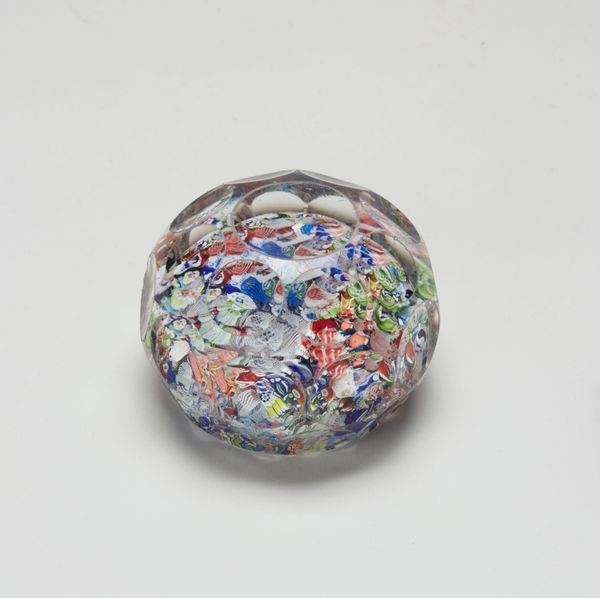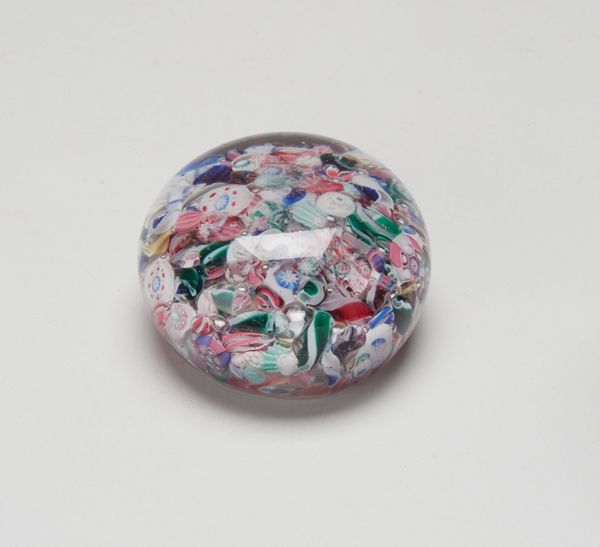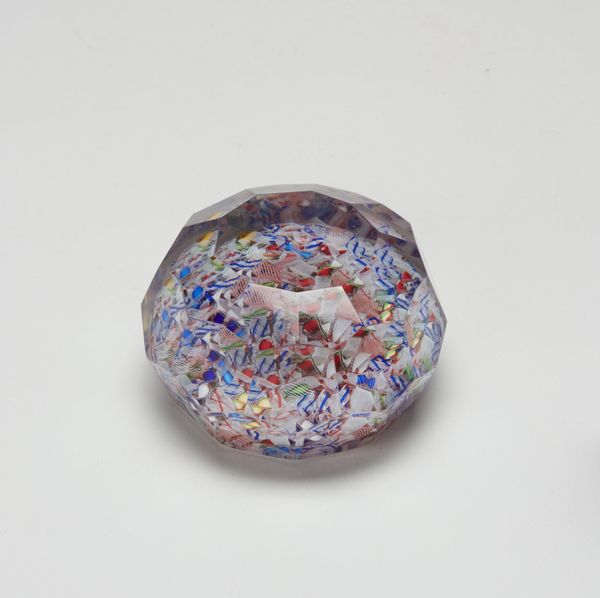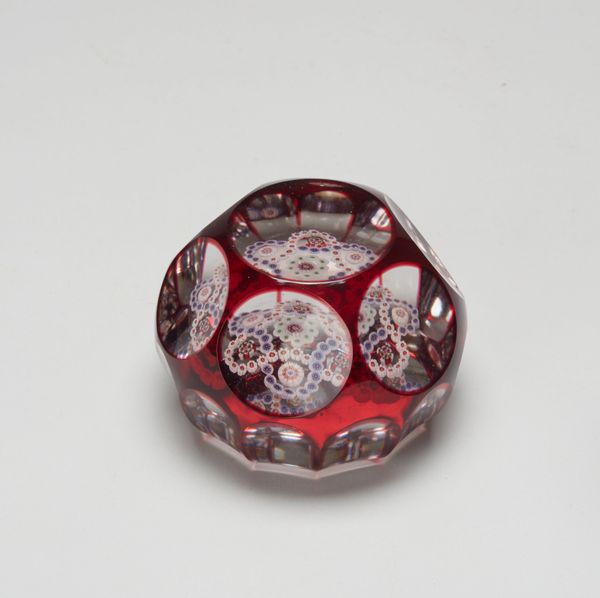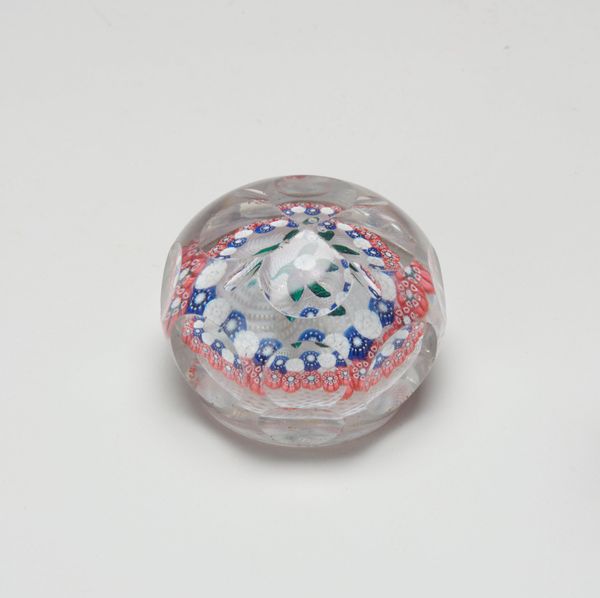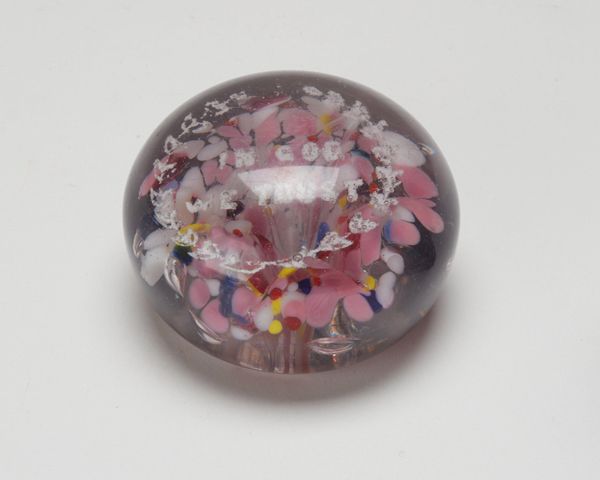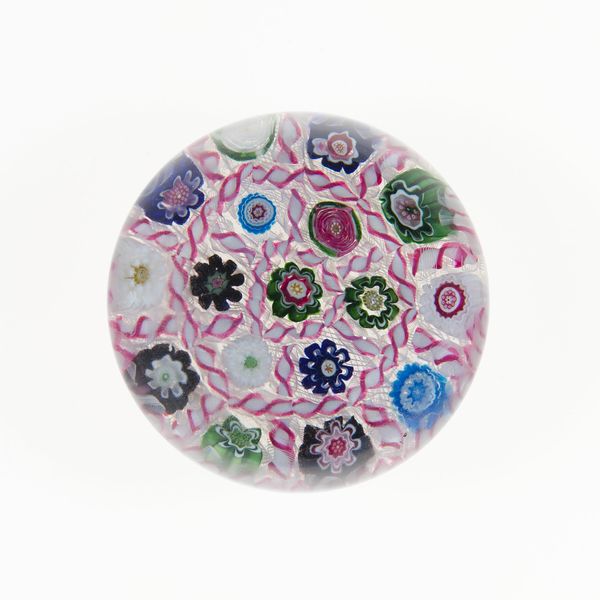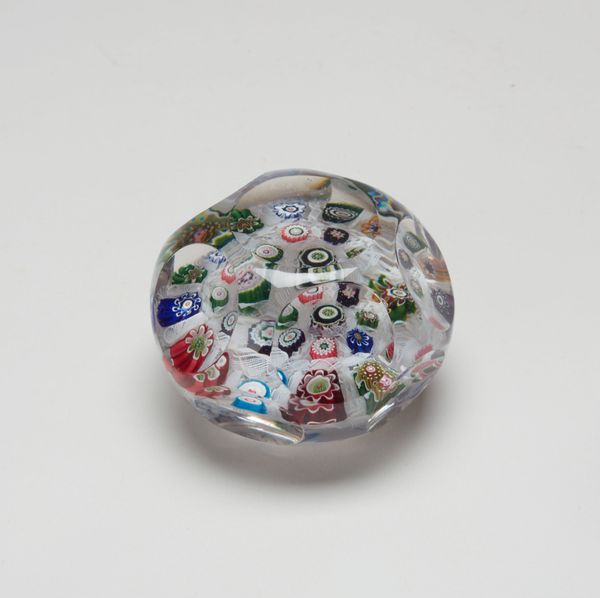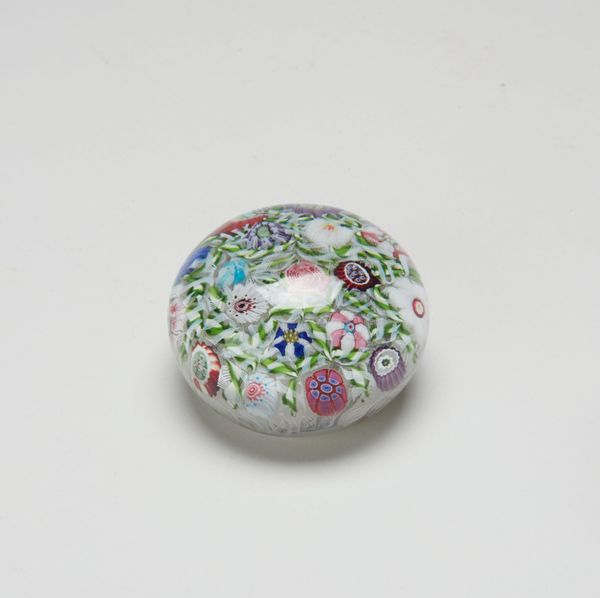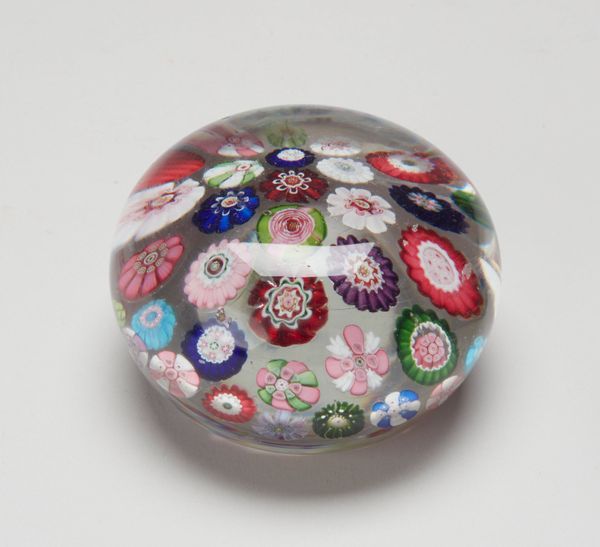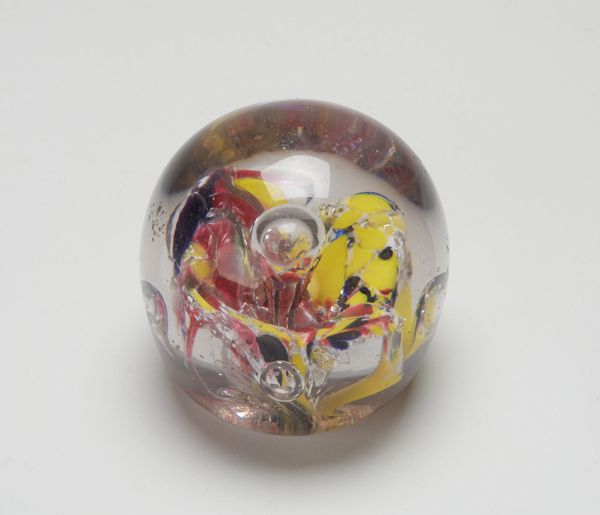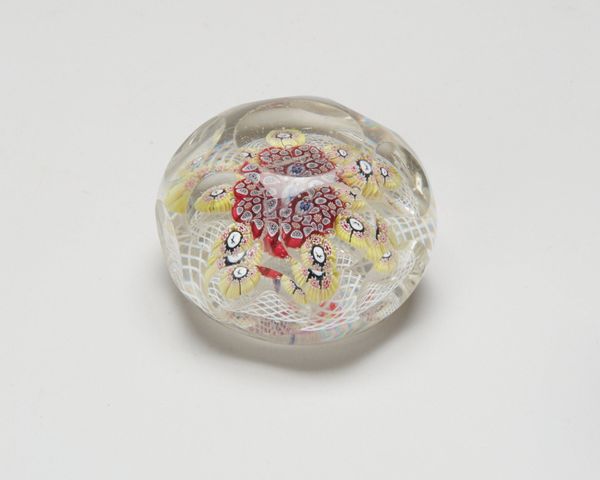
Dimensions: 8.1 cm (3 3/16 in.)
Copyright: Public Domain
Editor: Here we have Pietro Bigaglia's "Paperweight," created in 1846 using mixed media including metal, paper, and glass. The composition is quite mesmerizing! What's your interpretation of the dense imagery within? Curator: It's tempting to see this solely as decorative, but let’s consider its historical context. Mid-19th century Europe saw the rise of industrial production and mass consumption. Could this intricate paperweight, seemingly delicate and precious, be commenting on the explosion of available materials, on consumerism and material culture, and perhaps on Venice reclaiming their glass artistry? Editor: I see your point, I was looking at it only formally and hadn't considered the era. Do you see a statement on gender or class in its creation? Curator: Potentially. Who were the patrons of such objects? Were they largely the rising middle class, seeking symbols of status and taste? And considering the predominantly floral imagery and its association with femininity, could this speak to the roles women played in this consumer culture? Do you see any references to this in its art-nouveau stylings? Editor: The floral motifs could tie into notions of beauty, nature, and femininity as commodities. That’s an angle I hadn’t really explored before! Curator: Exactly. Think about who had access to leisure and beauty. Are there hierarchies embedded in the materials or the craft itself? Editor: So, what seems like a beautiful object becomes a reflection of the power dynamics of the time? Curator: Precisely. These seemingly simple objects offer fertile ground for examining social and economic narratives. Editor: That's amazing! It changes my whole understanding of decorative art. Curator: Absolutely, questioning is the best way forward!
Comments
No comments
Be the first to comment and join the conversation on the ultimate creative platform.
